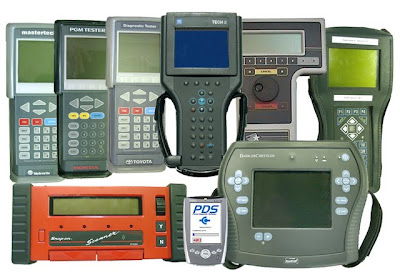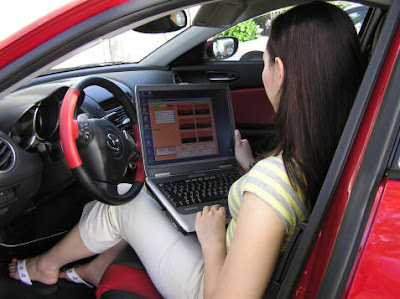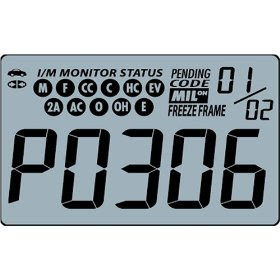
Scan Tools are used to measure and diagnose your vehicle information, such as RPM, Ignition Timing, Injector Pulse width and readings from a number of sensors such as the 02 sensor, TPS (throttle positioning sensor), and (MAF) mass airflow sensor. It will also show certain switch position signals.
 Using A Scan Tool
Using A Scan Tool
 Using A Scan Tool
Using A Scan Tool1. Plug the scan tool into the ECU, either under the dash or under the steering wheel. (Could be hidden)
2. Power On the Scan Tool. The display will come on, and after it communicates with the car's computer for a few seconds, it will display an OK message or a menu.
3. Navigate the menu to find the stored codes that the car's computer has stored into memory. These codes are collected overtime, and unless the vehicles battery has been disconnected, they should remain in memory. The scan tool will display these codes, along with basic data information about the code.
4. Write down the codes that are displayed and then research them. Automotive repair manuals will have a list of these codes and what they mean for that type of make or model. Many codes will start with a letter, followed by several numbers, such as F-233, and they are tripped by sensors that the computer monitors constantly. When these sensors determine something is wrong with the motor, they store the code in the computer so that the mechanic can determine the i ssue and repair it.
ssue and repair it.
 ssue and repair it.
ssue and repair it.Example.
Here is a fault code for a 6 cylinder engine.
As you can see this is a 5 digit number, with a letter at the front. When I read the manual for this type of this vehicle, or go to the following website http://www.youfixcars.com/, I can see that the fault code is P0306- Cylinder 6 Misfire Detected. We now know that the 6th cylinder has a fault, and can now try to work out what the actual problem is. It could be a dirty spark plug, dirty distributor or any number of things. But at least now we know what the problem is. However the Scan Tool is preset to finding more priority faults first, so after the problem has been fixed, another isolated problem may still need to be attended to.
No comments:
Post a Comment